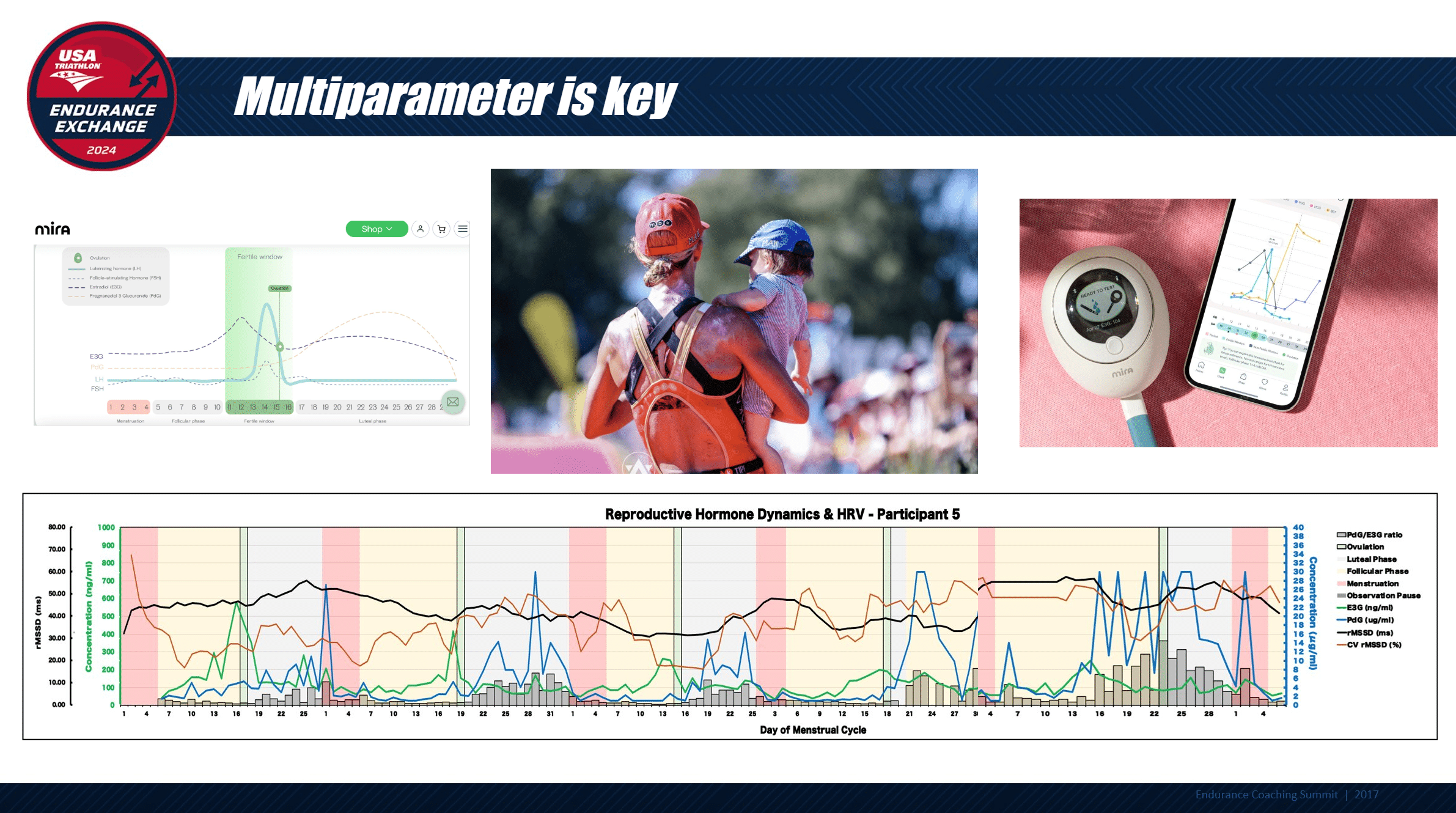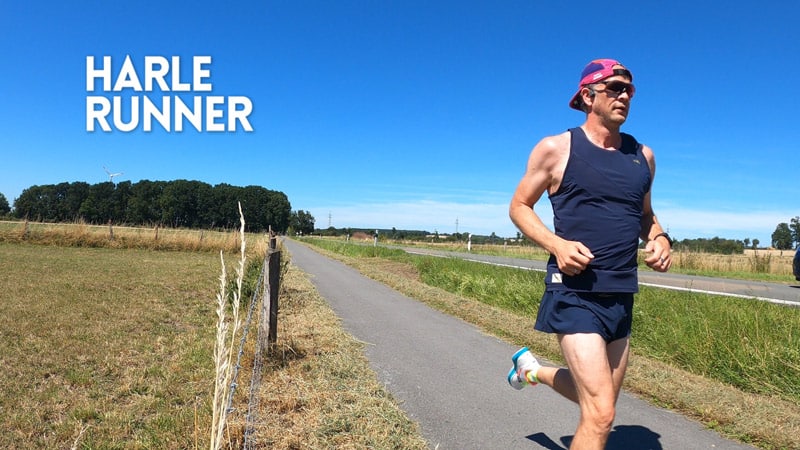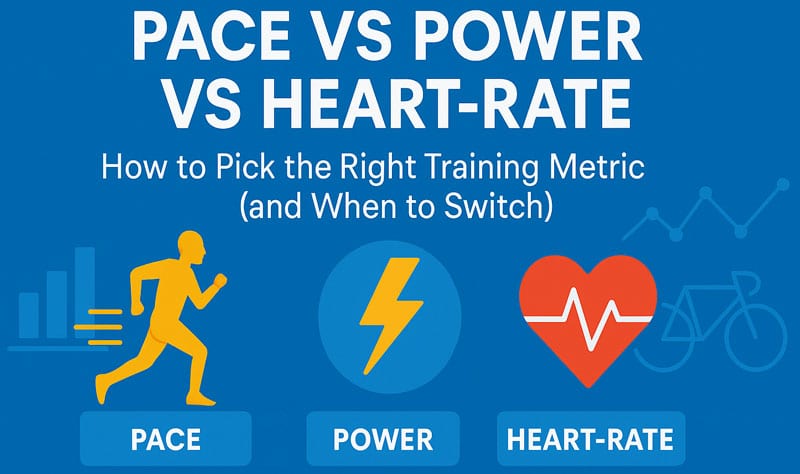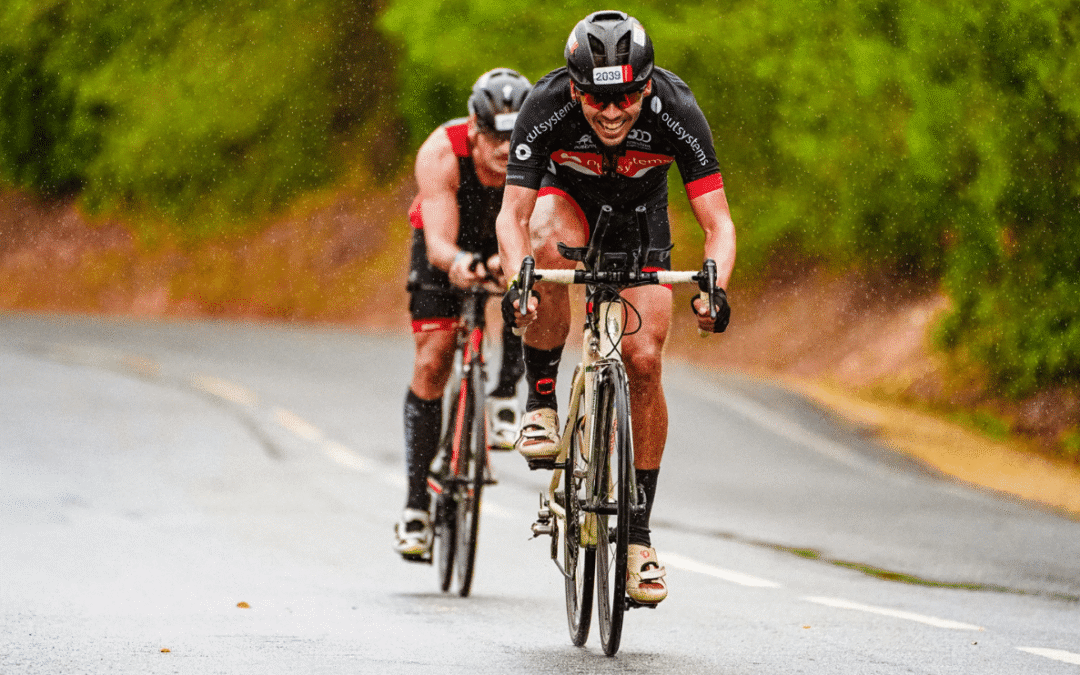As everyday athletes, we’re constantly seeking ways to optimize our training, fine-tune performance, and ensure we’re in the best shape possible for racing. These days, we have an almost unlimited amount of data to shift through to help us make smart training decisions. One of the most popular tools now is heart rate variability (HRV).
In a recent The Athlete’s Compass podcast episode, Dr. Paul Laursen, Marjaana Rakai, and Paul Warloski discussed the complexity of HRV and its importance for all athletes. For many, HRV might initially seem like a complex concept, but its implications for training and performance are profound. Let’s break down the insights shared in the podcast and explore how athletes can leverage HRV to make informed decisions about their training.

Beyond the Tin Man’s Clock
When we think of heart rate, we often envision a steady rhythm, akin to Tin Man’s Heart. Tick-tock, tick-tock. However, the reality is far more nuanced. Heart rate variability refers to the variations in time intervals between successive heartbeats. Rather than a uniform rhythm, our heart rate fluctuates almost randomly. However, this randomness provides insights into our body’s response to various life stressors. Not just training load, but psychological and emotional stress, and even nutrition and sleep quality.
Think of HRV as a window into your body’s autonomic nervous system, which regulates essential functions such as heart rate, digestion, and stress response. By analyzing HRV, athletes can gain a deeper understanding of their physiological state, enabling them to adjust their training approach accordingly.
Practical Applications of HRV
One of the key points that emerged from the podcast episode was the importance of analyzing HRV data within the broader context of an athlete’s training history. Rather than reacting to individual readings, such as a single high or low HRV value, it’s essential to adopt a long-term approach. By tracking trends over time, athletes can identify patterns and deviations from their baseline, allowing for more nuanced adjustments in training instead of knee-jerk reactions.
One might ask: are the HRV indices individual, or should we be striving for a specific value?
Dr. Laursen explained that while higher numbers were generally better, the reality is that HRV values are individual. One’s normal range could be low in the 50 rMMSD range, while others’ baseline may be in the 100s. More importantly, you need to start by knowing your own individual normal value.
To achieve this at Athletica, we import your overnight HRV value from your Garmin device and highlight your normal value by showing your 60-day value (orange band). Once again, we are careful not to have a knee-jerk reaction to an isolated data point, and only make noise when your 7-day average (blue running line) runs higher or lower than normal.

For example, if an athlete observes a consistent decline in HRV leading up to a race, it could indicate increased physiological stress and the need for a lighter training load, more aerobic (< Zone 2 training) vs HIIT or mid zone training, or additional recovery strategies. Conversely, a rise in HRV during a training block may signal enhanced adaptation to training.
Navigating the Nuances: Age, Sleep, Menstrual Cycle and Beyond
Another topic explored in the podcast was the impact of age on HRV. While aging inevitably influences physiological parameters, including HRV, it’s crucial to consider individual variability. Biological age, influenced by lifestyle, stress management, and sleep quality, often paints a more accurate picture of an athlete’s physiological state than chronological age alone.
Moreover, the discussion emphasized the importance of sleep quality in maintaining optimal HRV. Sleep disturbances, whether due to training stress, illness, or other factors, can significantly impact HRV readings. Athletes are advised to prioritize restorative sleep as a cornerstone of their training routine, recognizing its profound effects on recovery and performance.
The menstrual cycle may also affect HRV measurement. In this slide from Dr. Laursen’s presentation at the USA Triathlon Endurance Exchange Conference, pilot data in a single subject from our Female Athlete study over several months shows a general trend in HRV relative to changes in progesterone level.

Optimizing the Power of HRV for Peak Performance
As athletes, our journey toward peak performance is a multifaceted endeavor, requiring a holistic approach to training, recovery, and self-awareness. Heart rate variability serves as a powerful tool, offering a window into our body’s physiological state and response to training and life stress. As professed by Dr Marco Altini of HRV4Training, when assessing HRV, remember that everything is relative, keep the big picture in mind always, and remember that multiparameter is key. Multiparameter decision-making includes HRV measurements alongside motivation, overall fatigue levels, and sleep quality.
Big picture context means that you as an athlete should never blindly base your training decisions on a single measurement but use the tools to form a big picture context factoring your subjective feelings together with the tools you use, like HRV.
This is where we hope to have an impact at Athletica, as our aim is to merge your data and synthesize the information to provide actionable insights into your training and life.

Summary
The key takeaways on HRV in application to endurance training from the research we have today are:
- Morning or overnight HRV can practically determine an individual’s response to training load/stress
- Adaptation is typically better with increased/normal vs decreased HRV
- For HRV interpretation remember:
- Everything is relative
- Big picture first
- Multiparameter is key
Frequently asked questions:
Are there any specific dietary or lifestyle changes that can help improve HRV besides just focusing on training intensity and sleep?
Consuming a diet rich in fruits, vegetables, proteins, and healthy fats can positively impact HRV. Avoiding excessive consumption of processed foods, sugars, and trans fats is important for overall cardiovascular health and HRV. Staying adequately hydrated is crucial for maintaining optimal HRV.
Implementing stress-reducing techniques like meditation, deep breathing exercises, yoga, or spending time in nature can help improve HRV. Chronic stress can disrupt the autonomic nervous system and lower HRV, so finding effective ways to manage stress is essential.
Excessive alcohol consumption and high caffeine intake can both negatively impact HRV. Moderating alcohol consumption and limiting caffeine intake, especially in the evening, can support better HRV.
While sleep was mentioned earlier, it’s worth reiterating its importance. Prioritize good sleep hygiene practices such as maintaining a consistent sleep schedule, creating a comfortable sleep environment, and avoiding screen time before bed to enhance HRV.
By incorporating these dietary and lifestyle changes alongside focusing on training intensity and sleep quality, individuals can work towards improving their HRV and overall cardiovascular health.
How often should an athlete measure their HRV to get accurate and meaningful insights, and are there certain times of day that are more optimal for measurement?
The frequency of HRV measurements for athletes depends on various factors such as training load, recovery status, and individual response to training. Generally, athletes can benefit from measuring HRV daily or several times per week to track their autonomic nervous system function and overall recovery.
Regarding optimal timing for HRV measurements, there are a few considerations:
It’s important to measure HRV at the same time each day to minimize variability caused by circadian rhythms. Many athletes choose to measure HRV upon waking, before engaging in any physical activity or consuming food or beverages.
Morning HRV readings are commonly preferred because they provide insights into overnight recovery and baseline autonomic nervous system function. By measuring HRV upon waking, athletes can assess how well their body has recovered from the previous day’s training and activities. Overnight nocturnal measurements are also valid.
Ultimately, athletes should experiment with different measurement times and frequencies to determine what works best for them based on their training schedule, lifestyle, and individual response to training and recovery interventions. Tracking HRV consistently over time can help athletes identify patterns, optimize training adaptations, and prevent overtraining and injury.
Can HRV be affected by factors like dehydration, caffeine intake, or other common substances, and if so, how should athletes account for these variables when interpreting their HRV data?
Keep track of factors that may affect HRV, such as hydration status, caffeine intake, sleep quality, and stress levels. By recording these variables alongside HRV measurements, athletes can better understand how lifestyle factors may impact their autonomic nervous system function.
Experiment with different lifestyle choices to observe how they influence HRV. For example, athletes may choose to abstain from caffeine for a period of time and monitor the effects on HRV, or they may increase their fluid intake and observe any changes in HRV measurements.
Consider HRV data within the context of other physiological metrics and subjective indicators of recovery, such as perceived fatigue, sleep quality, and training load. While HRV can provide valuable insights into autonomic nervous system function and recovery status, it should be interpreted alongside other relevant information to make informed decisions about training and recovery strategies. Remember, HRV is only a data point to base your training decisions on.






